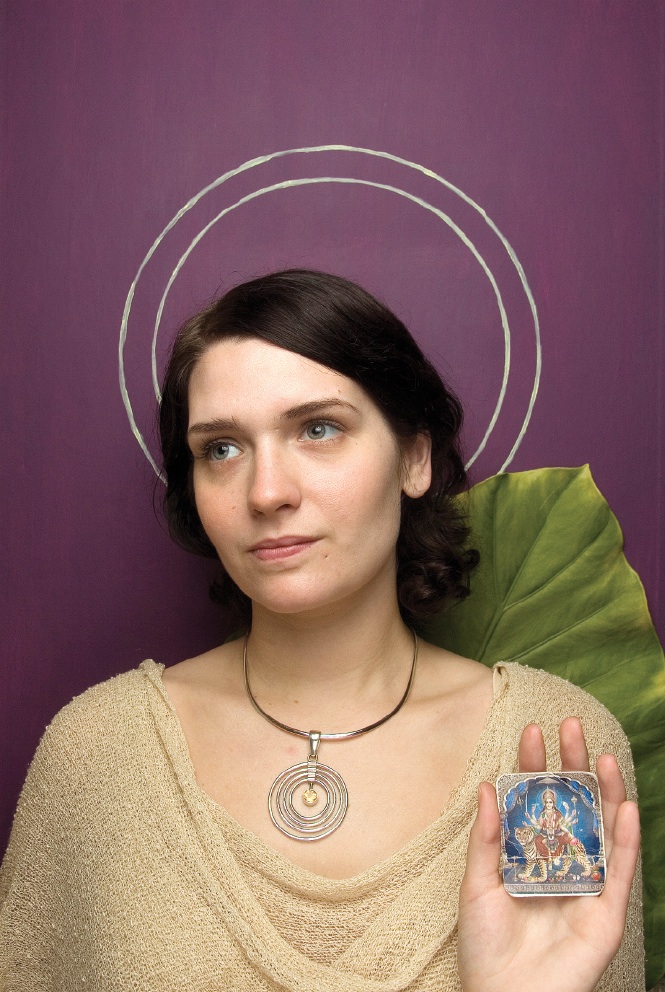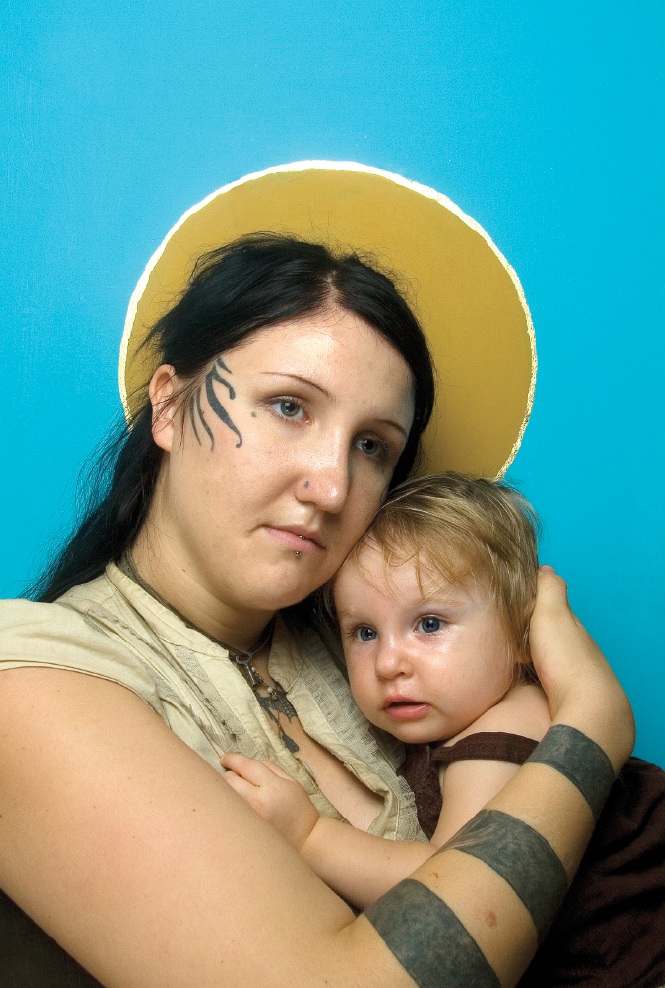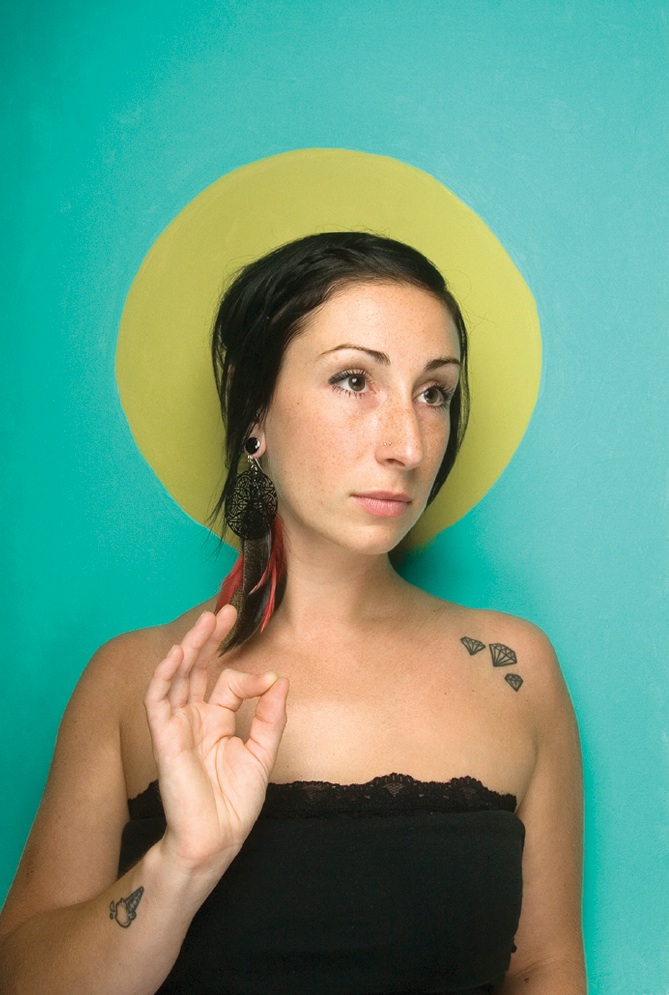New Orleans photographer Libbie Allen was raised Catholic, but broke from the Church years ago. While she no longer practices any specific faith, spirituality remains a force in her life. What’s more, she never lost her love for the symbols of faith. “Because of my religious upbringing,” she says, “I’ve always been fascinated by iconography, and I’ve used it consistently throughout my art.”
The Halo Project was inspired, in part, by a quote she stumbled across during a humanitarian phase, when reading the ancient Roman playwright Terence: “Homo sum, humani nihil a me alienum puto,” or “I am a human being, I consider nothing that is human alien to me.”
The concept for the Halo Project was born then and there. “The idea was to use a halo as a loose representation of divinity,” she says, “as a way of presenting everyday people in a kind of holy light, bestowing them with a divine presence.” Equally important to her was that her subjects include a symbol—a talisman or gesture, an object or loved one—that articulated who they were, their deepest commitment.
The halos offer clear tribute to Allen’s Christian roots, framing what she considers a bold diversity of subjects: Each woman expresses herself through her individuality by means both pithy and profound. The divine and quotidian don’t compete for the eye; rather, they seem to cooperate to complete the picture.
Alesondra, a writer and filmmaker who appears on our cover, brought one of her short stories that expressed a belief in the transformative power of love, and in the strength of femininity. Impulsively, rather than hold the page up to the camera, she was inspired to wear the words—to own them, so to speak.
Allen chose a Rosary for her self-portrait, to represent her upbringing and the influence of her family in shaping her identity. Elizabeth, a friend and photographer, used her tattoos as relics—one for “expression” and the other for “nothingness,” a play on the rhythm and balance of yin and yang. Nikki brought her daughter, her obvious love. Jamie, a bartender, let her tattoos—three daoist jewels: compassion, humility, and moderation—and the gesture of an ohm speak to the importance of spirituality in her life.
Rachel, a graduate student who works in community development, brought three symbols: a leaf from an elephant ear palm, to symbolize her ease in nature, a positive-energy stone known as a citrine, and a keepsake of Durga, the Hindu warrior goddess with whom she most strongly identifies. She discovered Durga during a transformative sojourn in India and now reflects on her, as she says wryly, “whenever I need a little girl power.”












